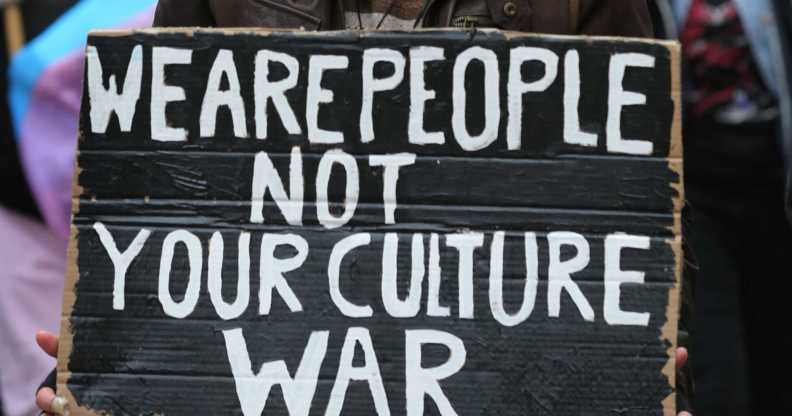Why ban on trans women in women’s prisons would be a ‘travesty’: ‘Safety is most important factor’

The manager of Scottish Trans has penned a piece for The Scotsman about trans prison policy (Martin Pope/Getty Images)
A blanket ban on trans women in women’s prisons would be a travesty, the manager of a trans organisation has said.
In a piece for The Scotsman, boss of campaign group Scottish Trans Vic Valentine outlined how the organisation helped develop the Scottish Prison Service’s first trans policy a decade ago, as well as its review last year, and what the policy means in reality for both trans prisoners and the wider prison population.
In recent weeks, Scotland has become the epicentre of debates around trans rights due to the UK government blocking Scottish parliament’s landmark reforms to its gender laws, the case of rapist Isla Bryson and a block on trans women with “male genitalia” in women’s prisons.
After being passed by 86 votes to 39, the Gender Recognition Reform (Scotland) Bill, which would make it easier for trans people to get a Gender Recognition Certificate, was blocked by the UK government in January using Section 35 of the 1998 Scotland Act – an unprecedented move in the history of devolution.
Just a week later, Bryson was found guilty of raping two women prior to transitioning, one in 2016 and the other 2019, after a six-day trial at the High Court in Glasgow.
Controversy arose around the legitimacy of the rapist’s trans identity and the fact that Bryson was remanded to Cornton Vale women’s prison in Stirling while awaiting sentencing.
On the same day, deputy prime minister Dominic Raab announced that the government will no longer place trans women who have “male genitalia” in women’s prisons.
In the Scotsman article, Valentine stated: “Historically, pretty much every trans person was held on the estate that matched their sex recorded at birth.”
This often resulted in trans people being kept in segregation because they faced “discrimination, abuse, assault, and sexual violence in the general prison population”.
For Scottish Trans, “the most important factor”, Valentine explained, “in making decisions about how to house trans people in custody, is safety. The safety of everyone”.
Valentine added: “That is why, in 2014, and when we were asked again last year, we made the case that there should be a risk assessment in the case of each trans person.”
The assessment should consider all risks associated with an individual being housed in either a women’s or men’s prison before they are placed in a facility. The assessments should then be reviewed regularly.
The manager stated: “It’s our view that anyone who has committed sexually violent crimes, and who poses a risk to women, should not be housed with women on the female estate.
“For the approach to work, it is essential that everyone’s safety is considered. Where the risk assessment finds no genuine reason to decide otherwise, a trans person should be housed in the estate that corresponds with their identity.
“This does not necessarily mean the experience for a trans person is identical to everyone else’s. When it comes to things like sharing cells or using showers, it may be necessary to treat trans people differently, to increase privacy for all.”
An individual approach is needed
Referring to the wider debates which have exploded around trans prisoners in recent weeks, Valentine agreed it is “fine, and right” to have rules that make an offender unfit to be placed in a particular estate and said they “share concerns about the safety of women in prisons”.
But they continued: “Calls to revert to a situation where trans people are always housed on the estate that matches their sex recorded at birth would see a return to an approach we already know can have devastating consequences.
“It would be an approach that did not, in fact, seek to put safety at its heart.
“While blanket bans and rules about whole groups of people can feel reassuring, they very often lead us down a path we don’t want to follow.
“It is important to focus on the facts and take decisions that place the safety and human rights of everyone at their very centre.”
How did this story make you feel?

